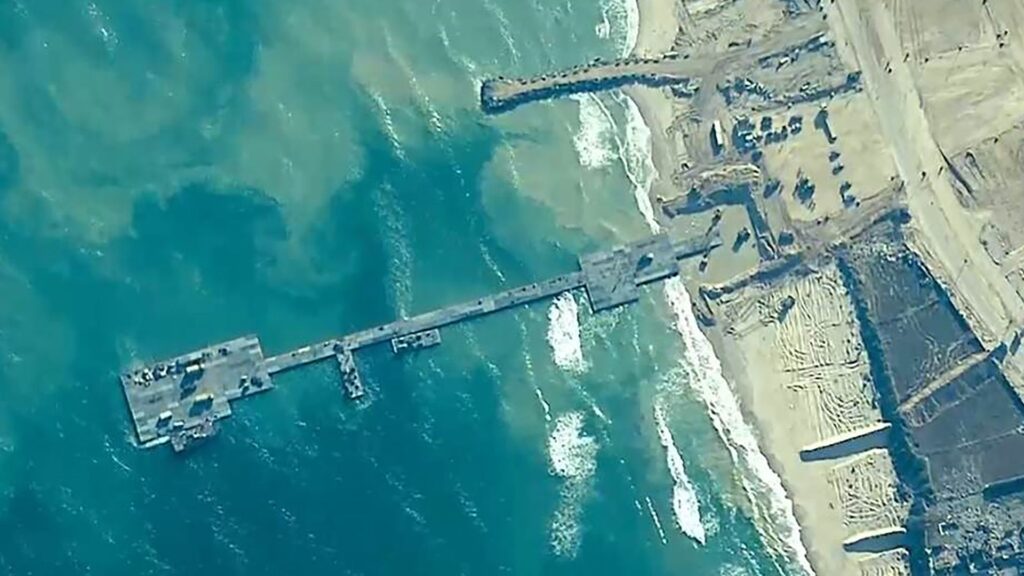An overseas military operation aimed at delivering aid to Gaza cost the U.S. nearly $230 million and led to dozens of service member injuries, according to a new report. The Defense Department’s inspector general says rough seas and bad weather, combined with poor planning, made the mission largely ineffective.
Biden announces floating pier in Gaza during presidency
Former President Joe Biden announced the plan to build a floating pier off the coast of Gaza during his State of the Union address in March 2024.
Unbiased. Straight Facts.TM
USAID reported that Biden’s Gaza pier fell short of its goal to feed 1.5 million people over three months, ultimately providing enough aid for 450,000 people for one month.

“I’m directing the U.S. military to lead an emergency mission to establish a temporary pier in the Mediterranean on the coast of Gaza that can receive large ships carrying food, water, medicine and temporary shelters,” he said during his speech.
Congressional leaders across the nation called the move by Biden a political stunt because he was facing growing pressure to provide more help in Gaza from Democrats.
The USAID released a report in 2024 following the operation’s end. According to the USAID, the mission fell short of the U.S. government’s goal to feed 1.5 million people over three months, delivering only enough aid to feed 450,000 people for one month.
What did the report find?
The U.S. military uses specialized watercraft to carry out missions and training in shallow waters, according to officials from the Army, Navy and U.S. Transportation Command.
U.S. troops were deployed to support a 20-day humanitarian delivery mission, although the full operation lasted about three months. The report, released May 2, said 62 service members were injured, more than the Pentagon previously disclosed. Previously, officials said three military members were injured due to an incident that occurred during the mission.
However, investigators couldn’t determine whether the injuries happened while building the pier, were caused by medical issues or occurred during off-duty hours. Among those injured was one Army sergeant who died following an accident aboard a Navy ship during the mission.
These vessels are designed to move cargo and equipment where permanent ports are not available, using temporary docks and piers to unload supplies. Both the Army and Navy have similar but distinct platforms to support these operations, known as Joint Logistics Over-the-Shore, or JLOTS. These assets allow the Department of Defense to deliver supplies and equipment around the world.
However, the inspector general found that neither branch’s equipment met required operational standards, eventually resulting in $3 million in damage.
In addition, the report says the Army and Navy failed to organize, train and equip forces to a common joint standard. Their watercraft, causeways and communications systems were not fully operable, which led to damaged equipment during operations, including Operation Neptune Solace off the coast of Gaza.
Humanitarian aid is still needed in Gaza
The block of aid is still a problem in Gaza according to UNICEF. The organization says Israel is not allowing aid to flow through the country resulting in hundreds of thousands of Palestinians to experience hunger, lack of access to medical care or clean water.
“For 1 million children unable to flee in search of safety, humanitarian aid has provided the only lifeline,” UNICEF said.
Executive Director Catherine Russell said in a statement on May 2 that children are facing death.
“For two months, children in the Gaza Strip have faced relentless bombardments while being deprived of essential goods, services and lifesaving care,” Russell said.
According to Reuters, Israel said its forces block humanitarian aid from entering Gaza because Hamas steals the supplies intended for civilians. Israel alleged Hamas instead takes the items and gives them to their forces.


